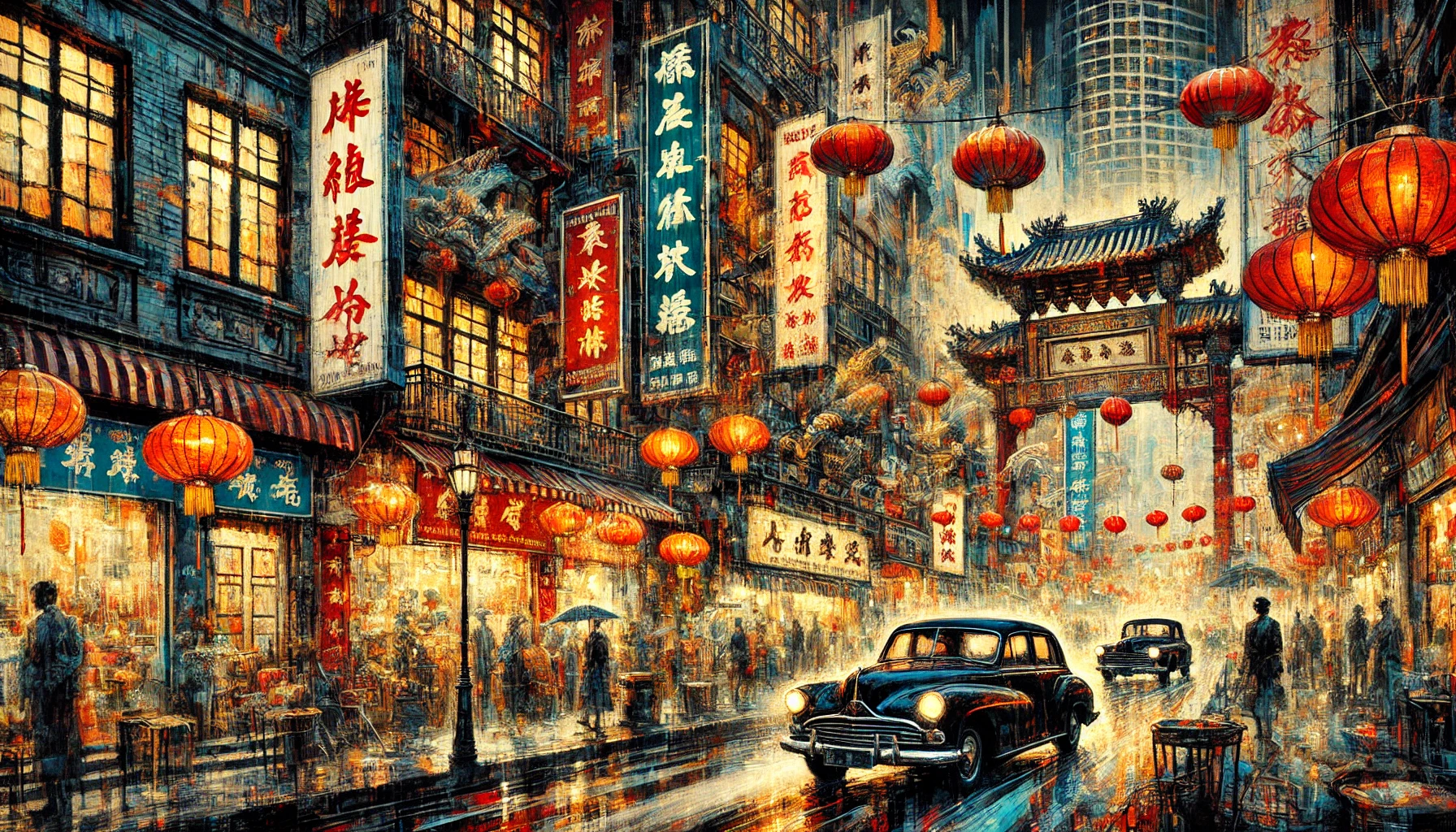Evelyn Zhao was a Chinese-American artist known for her pioneering work in combining traditional Chinese ink painting techniques with Abstract Expressionism and Pop Art. Her unique style, which she termed "East-West Fusion," gained significant recognition in the 1960s and 1970s, influencing a generation of Asian-American artists.
Born in San Francisco in 1928 to Chinese immigrant parents, Zhao showed an early aptitude for art. She studied traditional Chinese painting techniques from her grandfather, a former court painter who had fled China during the fall of the Qing Dynasty. In 1946, she enrolled at the California School of Fine Arts (now the San Francisco Art Institute), where she was exposed to Abstract Expressionism and studied under Clyfford Still and Mark Rothko.
Zhao began her professional career in 1952, initially working in a style heavily influenced by Abstract Expressionism. Her early works, such as "Chinatown Nights" (1954) and "Memories of Home" (1956), show a clear tension between her Western art education and her Chinese cultural heritage.

Chinatown Nights (1954) by Evelyn Zhao
In 1957, Zhao traveled to New York, where she became associated with the second generation of Abstract Expressionists. It was during this period that she began experimenting with incorporating elements of Chinese calligraphy into her abstract works.
The 1960s marked a turning point in Zhao's career. Inspired by the emerging Pop Art movement and her own cultural background, she began creating works that combined the gestural freedom of Abstract Expressionism with the precise brushwork of Chinese ink painting and iconography drawn from American pop culture.
Her breakthrough piece, "Fortune Cookie Explosion" (1963), featured enlarged, fractured images of fortune cookies with actual fortunes integrated into the composition, all rendered in a style reminiscent of splash-ink landscape paintings. This work marked the beginning of her "East-West Fusion" style.

Fortune Cookie Explosion (1963) by Evelyn Zhao
Zhao's work gained widespread recognition in the 1970s. Her series "Mao Meets Mickey" (1972-1975), which juxtaposed images of Mao Zedong with Disney characters, was both praised for its political commentary and criticized for trivializing serious issues.
In 1979, Zhao became one of the first Chinese-American artists to have a solo exhibition at the Whitney Museum of American Art. However, her work also faced criticism from some members of the Chinese-American community who felt it perpetuated stereotypes.
In her later years, Zhao's work became more introspective. Her series "Dialogues with Ancestors" (1995-2005) combined family photographs with traditional landscape elements, exploring themes of memory and cultural identity.
A piece from the Dialogues with Ancestors series (2000) by Evelyn Zhao
Zhao continued to work until her death in 2015. Her final series, "Digital Dynasties" (2010-2015), incorporated elements of digital art and glitch aesthetics into her established style, demonstrating her continued willingness to experiment with new forms.
Evelyn Zhao's work played a crucial role in expanding the boundaries of Abstract Expressionism and Pop Art, incorporating non-Western elements and addressing issues of cultural identity. Her "East-West Fusion" style influenced many Asian-American artists and contributed to the broader conversation about multiculturalism in American art.
The Evelyn Zhao Foundation, established in 2016, continues to promote her legacy and support young Asian-American artists working across cultural boundaries.
Zhao was known for her vibrant personality and her ability to bridge cultural divides. She married jazz musician Robert Chen in 1955, and their home became a gathering place for artists, musicians, and intellectuals from diverse backgrounds. Zhao was also an advocate for Asian-American representation in the arts, frequently mentoring young artists and speaking out against discrimination.
Zhao's work is characterized by its bold fusion of Eastern and Western artistic traditions. She often used traditional Chinese ink and brush techniques on large-scale canvases, combining them with the spontaneous gestures of Abstract Expressionism. Her color palette evolved from the muted tones of her early work to the vibrant, often neon hues of her later pieces.
In her mixed-media works, Zhao frequently incorporated found objects, newspaper clippings, and fragments of text in both English and Chinese. This collage-like approach allowed her to create complex, layered narratives that explored themes of cultural hybridity, displacement, and identity.
While initially controversial, Zhao's work has come to be seen as groundbreaking in its fusion of disparate cultural and artistic traditions. Art historian Joan Kee described Zhao's work as "a visual manifestation of the complex, often contradictory experience of the Asian-American diaspora."
Zhao's influence can be seen in the work of later artists such as Martin Wong, Hung Liu, and Mel Chin, who have similarly explored themes of cultural identity and hybridity in their art.
Zhao's life and work were the subject of the 2018 documentary film "Brushstrokes Between Worlds," directed by Wayne Wang. Her painting "Fortune Cookie Explosion" was featured prominently in the 2021 film "Shang-Chi and the Legend of the Ten Rings," introducing her work to a new generation of viewers.